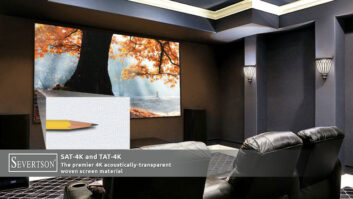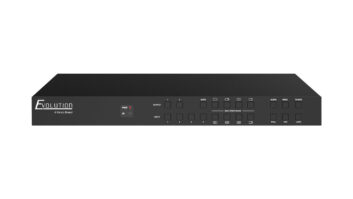With the opening of the National Association of Broadcasters Convention (NAB) next week, Ultra HD TV will be top of mind with many exhibitors and attendees alike, and while the long-term prospects look good for consumer acceptance, some challenges — including insufficient broadband bandwidth — await.
Those were the sentiments of Robin Murdoch, communications, media and technology managing director of Accenture, a global management consulting, technology services and outsourcing company.
Murdoch is armed this week with a recent global consumer study that spanned 1,000 consumers in each of 23 countries to determine the state and future of the video market.
Accenture, he said, is generally bullish on the prospects for Ultra HD: “We are starting to see all of the foundational elements being set in place.”
This, he continued, includes the three core elements for success of a new format like Ultra HD: content availability, TV hardware availability and sufficient delivery bandwidth availability.
The first two, he said, are here today or coming together rapidly, but regarding broadband availability, he said, “This will be a challenge that hopefully can be addressed to deliver 4K services to the home through [over-to-top] distributors like Netflix, etc.”
A number of technologies — like HEVC H.265 digital compression — are being developed and deployed that should address many of the bandwidth concerns, “but at the fundamental level, the general view is that you need over 10Mbps to deliver a reasonably good quality 4K picture. If you just look at the speeds that people are getting in their connectivity, the vast majority of people don’t have access to broadband that can cope with that.”
Murdoch pointed to his firm’s recent global survey showing that delivery of existing video formats over the Internet was presenting challenges for a high percentage of those surveyed.
On a positive note, he said more than half of all respondents (60 percent) streaming video at home said they were willing to pay for faster connections while just as many (62 percent) said they would pay extra so they could view videos untethered to the home.
Regarding interest in Ultra HD TV, the survey found growing consumer confidence, with 18 percent looking forward to buying an Ultra HD TV over the next 12 months despite a lack of content and streaming outlets.
“We are seeing massive price declines, so price, over the longer-term is not going to be an issue for 4K, and over the next few years it will become just the standard that everyone’s buying,” Murdoch said.
Twenty-five percent of consumers intend to purchase a connected TV in the next 12 months, and another 11 percent intend to replace an existing connected TV, while 12 percent plan to purchase a tablet. The number of TV-centric connected devices will surpass the entire world population of those over 15 by next year and should surpass the world’s population by 2017, according to industry estimates.
Close to half (44 percent) of all respondents view full length movies and TV shows over the Internet on a daily basis, and 39 percent do so weekly. This demand is not hindered by the fact that many respondents reported streaming interruptions and slow-downs in the viewing experience.
Regarding 4K content availability, Murdoch said a lot of content today is being produced in 4K, “but we still have a long way to go there, and it will be interesting to see what happens around that at NAB.”
Eventually, Murdoch said, broadcasters will jump into the 4K distribution game, because “it’s a great opportunity, especially for live sports.”
“If you look at NAB last year, we were coming out of CES where we saw 4K TVs costing more than a car. What a difference a year makes,” Murdoch said. “We’ve now got some 4K TVs that are around a $1,000 price point, and we’re starting to see some primetime content being shot in 4K, and the bandwidth challenge is the biggest that needs to be addressed. But our survey says that people are willing to pay more to get faster speeds. There is opportunity there and people need to get ready for it.”













